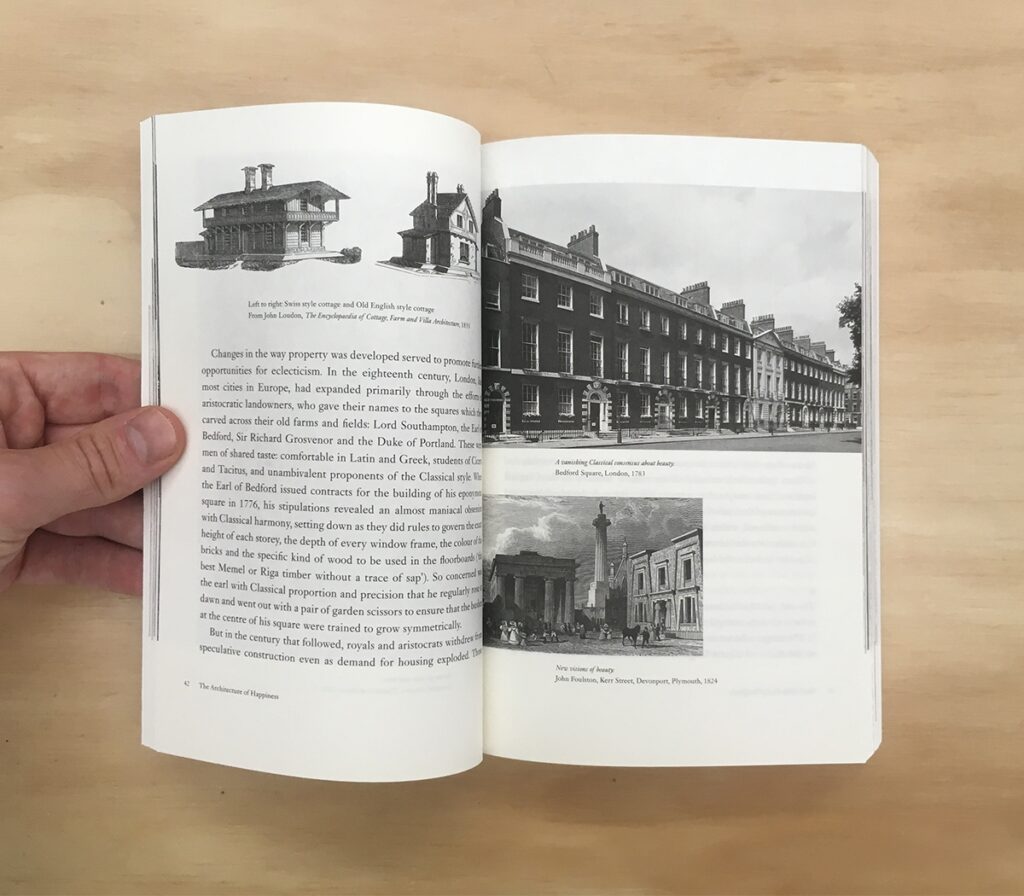The book review is a part of VK:a Architecture’s initiative ‘Annual Book Review Awards’, where VK:a team is encouraged to review any book of their choice.
Mind Over Body’ – whoever said this knew what he or she was talking about. All the things in the surrounding, tangible, or not, has an impact on the human mind and it is a human tendency to study those impacts in detail. The book ‘The Architecture of Happiness’ by Alain de Botton, a British author and philosopher, shares the same experience with the readers on how and why the architecture around us can have an impact on human mind and alter our emotions that we experience. He further questions that how will we feel if our “happiness” relies on the colour of the walls, or the shape of the door? What will happen to us in most of the places that we are forced to look at and inhabit? What will we experience in a house with prison-like windows, stained carpet tiles and plastic curtains? He wonderfully answers these questions by describing the play between mind and object through various images of homes from all around the world.

In his first chapter Significance of Architecture, the author, artistically envisages architecture as a living, breathing human being in the initial chapters and swiftly moves onto how and why the scale of the buildings, proportion of the spaces, colours used in internal areas, material of furniture and type of furnishings, in a room, can affect one’s mood and alter one’s emotions to not only create and store memories from specific occasions but also form and shape one’s mentality in day to day life to achieve happiness in relatively little amounts.
The author also indicates that “happiness” in architecture is no easier to find than it is anywhere else, apparently.
Buildings of stone and steel rest on the fragile foundation of human emotions and confused desires. Bad architecture is in the end as much a failure of psychology as of design. It is an example expressed through materials of the same tendency in other domains such as to marry the wrong person, choose inappropriate jobs and book unsuccessful holidays: the tendency not to understand who we are and what will satisfy us.
In chapter 2 – In What Style Shall We Build? the author tries to find answer to this very question with help of examples of different architectural styles from the past. He also points out, how in vain it is to answer it as there is no correct answer & that it is an admonishment that it might be indulgent to raise such a question in the first place. From describing different styles from different eras, by world known architects and their findings, the author moves on to his next chapter – Talking Buildings, in which he describes that how a particular building, talks to us by performing its core functions through its style, materials & design. In the search for truth, beauty, and happiness the author wanders off to farfetched land, geographically and chronologically. He pens down his thoughts on various architectural master pieces by renowned architects.
At the end he noted the difficulties of trying to find modern forms in which to express the traditional features of a culture, ultimately stating that ‘There are as many styles of beauty as there are visions of happiness”.

My favourite part of the book was when the author circles back his journey to the psychological need of a ‘Home’ that each individual feels at some level in his next chapter. From describing his personal experience from the streets of London to different concepts of homes in different religions. From concrete cities to country houses he states that, diversity of styles is a natural consequence of the manifold nature of our inner need. It is only logical that we should be drawn to styles that speak of excitement as well as calm, of grandeur as well as cosiness, given the polarities our own lives revolve around.
Finally, the book concluded by stating that, how now a days we are more fixated on achieving materialistic goals, rather than being aesthetically focused on the look and feel of the building, which makes us wonder in awe.
Inspiring us and making a promise, on how we owe it to our field of architecture, the land we design on and the trees which we build around, to bring a much- awaited evolution in our thinking and a fitting alternative to our current practices and mind set to create highest and most intelligent kind of happiness.







